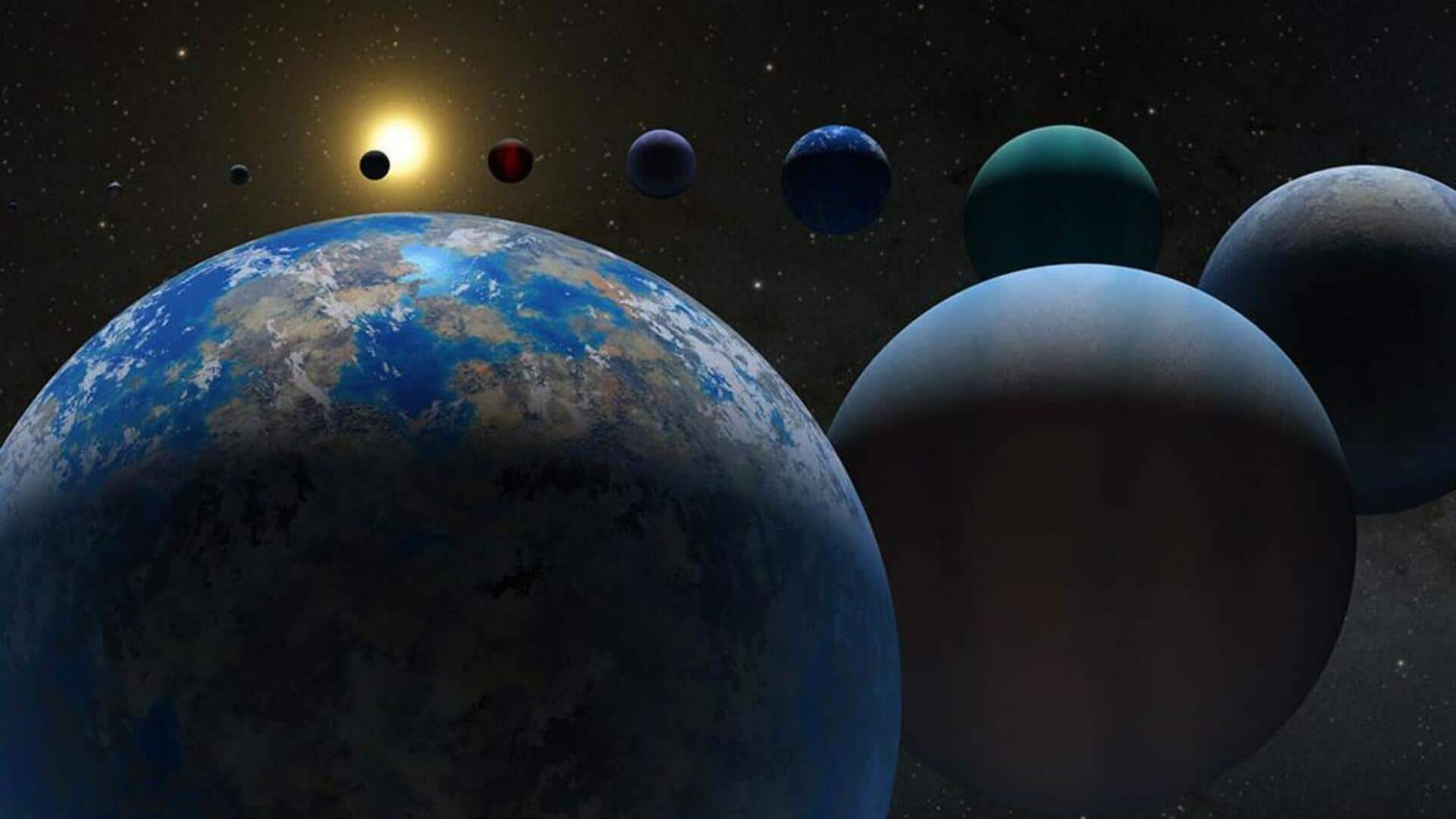
One-third of Milky Way exoplanets may contain liquid water: Study
What's the story
The possibility of finding life beyond Earth has enthralled scientists for a long time and remained a major quest in space exploration. Now, a study by the University of Florida has narrowed down the chances of discovering habitable exoplanets in the Milky Way. The research claims about one-third of the planets in the galaxy may possess liquid water, thereby promising conditions suitable for life.
Context
Why does this story matter?
Our solar system is just one specific planetary system—a star with planets orbiting around it, in the Milky Way galaxy, per NASA. To put things into perspective, there are "hundreds of millions" of planets around other stars in the Milky Way that could be habitable. The latest study gives us a picture of just how many potentially life-supporting alien worlds could be out there.
Study
The team looked at more than 150 exoplanets
According to the study, about one-third of the planets in the Milky Way are estimated to lie in the Goldilocks zone. It refers to a habitable region where the temperatures are suitable enough for exoplanets to retain liquid water. The team measured a parameter called "eccentricity" of more than 150 planets that orbit red dwarf stars, which are about the size of Jupiter.
M dwarf stars
Orbital eccentricity can determine the shape of planets' orbits
Orbital eccentricity is used to estimate the shape of the planet's orbit around its host star. For instance, it can assess if the planet's orbit is elliptical or differs from the perfect circle. Red dwarf stars may be the most abundant type of stars found in our galaxy. Since they radiate less light and heat, the habitable zone lies close to the fiery bodies.
Analysis
The team looked at data from Kepler and Gaia telescopes
For the investigation, the team relied on data from NASA's Kepler and Gaia telescopes. Kepler's data helped understand the movement of exoplanets around their host stars, while Gaia measured the distance between stars in the galaxy. "The distance is the key piece of information we were missing before that allows us to do this analysis now," said Sheila Sagear, one of the study's authors.
Examination
Star systems containing only one planet undergo "tidal extremes"
Upon analysis, the team found stars which host multiple planets in a circular orbit are more likely to harbor liquid water. In contrast, when a star system has only one planet, it may be subjected to "tidal extremes that would sterilize the surface." The orbiting planet may be roasted due to friction arising from tidal forces, thereby preventing life from taking place.
Conclusion
Study rules out two-thirds of planets orbiting M dwarf stars
The study has ruled out two-thirds of planets that orbit M dwarf stars. That indicates one-third of the exoplanets in the Milky Way may lie in the habitable zone. This one-third points to "hundreds of millions" of potential exoplanets that may harbor liquid water, serving as ideal candidates in the hunt for life beyond our solar system.
Official words
'This result is important for next decade of exoplanet research'
"I think this result is really important for the next decade of exoplanet research because eyes are shifting toward this population of stars," said Sagear in an official statement. "These stars are excellent targets to look for small planets in an orbit where it's conceivable that water might be liquid and therefore the planet might be habitable," she added.